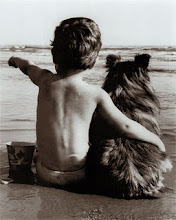Introduction
These three lessons give teachers ideas on how to use technology to promote good reading strategies. The lessons can be modified according to ability/grade level and content area.
The criteria sheet which accompanies the three lessons was designed to chart student progress and can be included in student portfolios. Teachers are able to use the data collected, in a class spread-sheet, to chart class progress. The last component of this unit includes a sample of a student's retelling on Hyperstudio, a versatile tool that can include video and is appropriate for students of all ages.
Lesson #1: Pre-Reading Strategies
Objective:
Prior to reading, students will be able to activate prior knowledge and generate predictions in order to comprehend text.
Materials:
Over-head projector, multi-media tools: video, books on tape, CD-ROMS, word processor, video disc, film strip, access to the internet (if available)
Procedures:
1. Teacher selects level-appropriate text
2. Briefly introduces the story/topic/concept
3. activates the student's prior knowledge through text and/or a multi-media approach (see materials above)
4. Teacher initiates discussion on topic and record students' responses on the over-head projector
5. Teacher asks students to predict what the text will be about
6. Students will record their predictions on word processors and/or tape recorders
Evaluation:
See criteria spreadsheet: Students will share connections between personal experiences and the story. Students will record adequate predictions.
Lesson #2: During Reading Strategies
Objective:
During reading, students will monitor and re-adjust their comprehension of text.
Materials:
Text, video camcorder, tape recorder, word processor
Procedures:
1. Teacher directs students to read the text (softly to themselves, to the teacher or into a tape recorder)
2. While they're reading, teacher will interact with students to assist with problem solving strategies
3. *Teacher will note and record problem-solving attempts and successes and any strategy used on criteria spreadsheet
4. *Students will record any new predictions on their word processor or into the tape recorder
Evaluation:
See spreadsheet criteria: Students will reread to check understanding and/or self-correct. Students will actively use information sources.
Lesson #3: After Reading Strategies
Objective:
After reading, students will revisit predictions and text to engage in problem-solving activities.
Materials:
Text, video camcorder, tape-recorder, CD-ROMS, word processor, over-head projector or LCD panel, Hyperstudio or Powerpoint
Procedures:
1. teacher talks about text/story and invites responses which can be recorded on overhead projector
2. teacher refers to text to discuss important features
3. teacher will ask students to compare and contrast predictions made throughout the reading of text
4. students will rework a final version of their story prediction on a tape recorder or word processor
5. students will do a retelling of the story or a summary of the text on tape, word-processor or videotape
6. students will create a storyboard; each card of the storyboard will list segments of the retelling, sequentially and any multi-media tool they will use
7. teacher and students will work together to produce a hyperstudio presentation
Evaluation:
See spreadsheet criteria: Students will able to read text with fluency. Students will be able to retell or summarize text.
Software and Internet
Extension Activities
• Multimedia Recommendations
• Links for Extension Activities on the Internet
Multimedia Recommendations
The following language arts multimedia programs been recommended by T.H.E (Technological Horizons in Education) Journal, vol. 25, number 9, April 1998.
JumpStart First Grade Reading for ages 5-7, is a game with activities that help students master critical skills of phonics, word recognition and story comprehension.
An Odyssey of Discovery: Writing for Readers and An Odyssey of Discovery: Writing for Readers for students age 9 and up both reinforce existing writing skills while encouraging budding writers to experiment with techniques such as brainstorming using visual prompts and editing. Both contain activities to enhance the creative thought process. Writing for Readers teaches plot, character and setting development.
Newskids- Learning Hot off the Press comes with teacher and student videos. Students learn how a newspaper story is written including the five who,what,where,when and why questions involved in writing a good story. The teacher 's video discusses how newspapers can can be incorporated into classroom content areas.
Reading Blaster for ages 9-12 is an engaging mystery game dealing with vocabulary, comprehension and sentence structure. There are three levels of difficulty for the reading material, which insures the software will remain challenging.
For those interested in a word game, Carmen Santiago Word Detective, for ages 8-14, teaches students to become proficient in puzzles that reinforce word definition, dictionary skills and speech recognition. Teachers are able to create their own word list for students to practice with.
Links for Extension Activities on the Internet
Internet activities can include doing research, e-mailing a classmate or an author, joining a mailing list to discuss books with other teens, publishing individual or class web pages and/or contributing own book reviews or poems to existing students' reviews and poetry databases.
ERIC/REC - Effective Strategies to Enhance Education for All Learners
Learning about the Author and Illustrator
YALSA-BK Join this mailing list to discuss books with other teens and adults. Send an e-mail message to listproc@ala1.ALA.org.
YALSA Booklists
Inkspot - For Young Writers
skip to main |
skip to sidebar


- Find out what I'm doing, Follow Me :)
Teaching Reading Using technologies

FOLLOW me...
MY PODCAST
Please visit my Podcast at freddydirga.podomatic.com
Content
- Teaching Strategy (3)
- Blog (2)
- Argumentative Essay (1)
- Cause and Effect (1)
- Descriptive (1)
- Iptek (1)
- Narrative (1)
- Podcast (1)
- Poem (1)
- cheat cegel seal online sealindo indonesia 2010 (1)
My Blog List
About Me

- FDP
- Making a blog is not only about design. A simple but nice blog is the most favorable one. Make it like this guys...
My visitors
Freddy's All Rights Reserved. Blogger Template created by Herdian Dirga
Wordpress Theme by Freddy Dirga | Supported by Retr0 Net


0 comments:
Post a Comment
Leave your comment please...